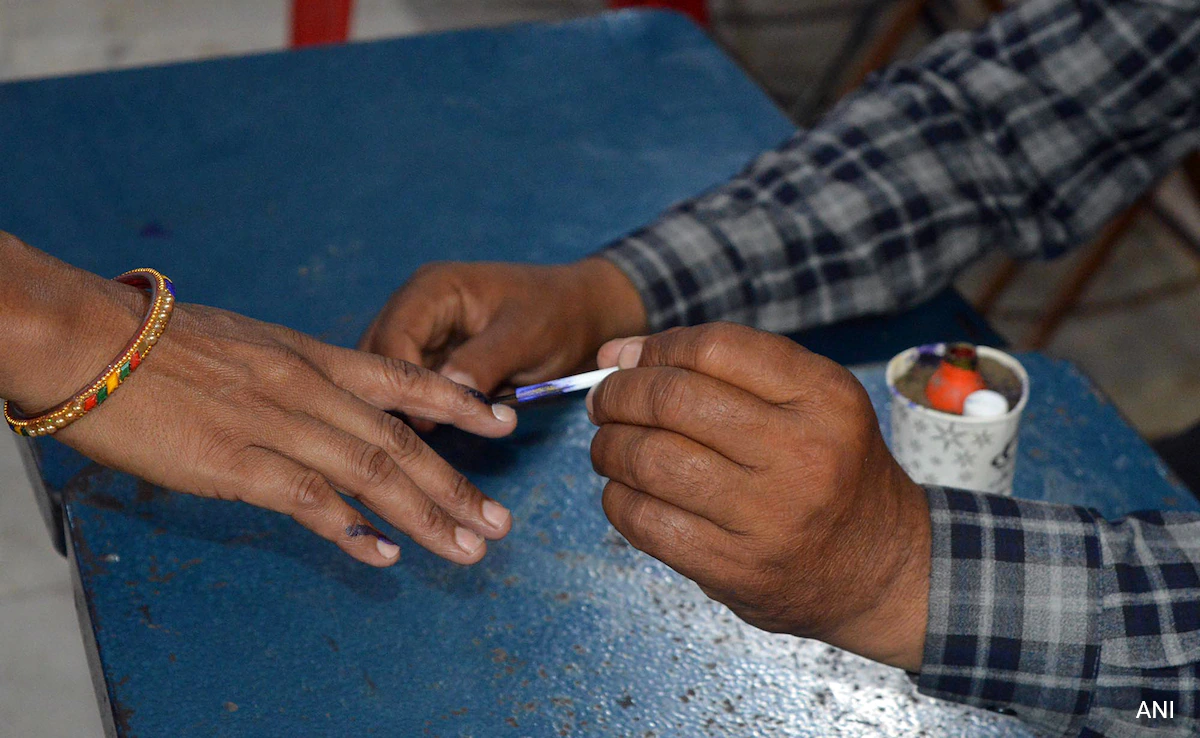2024-06-01 01:26:39

India uses electronic voting machines (EVMs) that allow for faster counting
Voting in Lok Sabha elections concludes on Saturday with Prime Minister Narendra Modi strongly favoured to win a third term in office.
AFP explains how the poll has been conducted and what is likely to happen:
– How do people vote? –
All citizens aged 18 and above are eligible to vote — that’s 968 million people, according to the election commission.
Turnout during the last national elections was more than 67 percent, with nearly 615 million people casting a ballot.
India uses electronic voting machines (EVMs) that allow for faster counting of ballots.
Election officials travel by foot, road, trains, helicopters, boats, and occasionally camels and elephants, to set up polling stations in remote locations.
They are sometimes accompanied by security forces in areas with a history of insurgent violence.
– Why has it taken so long? –
The sheer number of voters means that, every time India holds a national election, it marks the largest exercise of the democratic franchise in human history.
A total of 15 million people worked on the polls, including people temporarily assigned from elsewhere in the civil service.
Complicating the challenge are electoral laws requiring that each voter is no more than two kilometres (1.2 miles) away from a polling booth.
During this year’s election, a polling booth was set up for a single voter living deep inside a forest in the western state of Gujarat.
To ease the immense logistical burden, voting was staggered over six weeks from April 19, with the final round on Saturday.
– How much is it costing? –
Election and campaign spending have grown in tandem with India’s booming economy, now the fifth-largest in the world after overtaking former colonial master Britain in 2022.
An estimated $8.7 billion was spent by organisers, political parties and candidates in 2019, according to a report by the Centre for Media Studies (CMS).
Around a quarter of that figure came in the form of cash payments made directly to voters by candidates in an attempt to sway their decisions, the report said.
The same think tank told Indian media in February that it forecast spending to exceed $14.2 billion for this year’s contest.
That figure is almost on par with political spending in the United States for the 2020 congressional and presidential elections.
Have heatwaves affected the polls?
Turnout has dropped noticeably since the last national poll, with five out of the six phases recording a lower percentage of voters than 2019’s overall figure and the lowest at 62.2 percent.
Analysts have partly blamed the drop in voting on hotter-than-average temperatures heading into the Indian summer.
Tens of millions of people queued outside ballot stations during successive heatwaves across northern India that brought temperatures in excess of 45 degrees Celsius (113 degrees Fahrenheit).
In the city of Mathura, a three-hour drive from Delhi, election commission figures showed turnout dropping nearly nine points to 52 percent from five years earlier after hot weather.
The heat has also disrupted campaigning.
Roads minister Nitin Gadkari fainted while addressing a rally for PM Modi’s party in April and afterwards blamed the incident on discomfort “due to the heat”.
Officials in the eastern state of Bihar said on Friday 10 poll workers were among 14 people who died from heatstroke the day before.
– Who will win? –
Nearly all observers believe Prime Minister Narendra Modi will again prove an election winner, a decade after he first took office.
PM Modi, 73, remains robustly popular, with a Pew survey last year finding he was viewed favourably by nearly 80 percent of Indians.
His opponents have been hamstrung by infighting and what they say are politically motivated criminal cases aimed at hobbling challengers to PM Modi’s ruling Bharatiya Janata Party (BJP).
Speculation has focused not on whether the BJP will win but on the magnitude of its victory, with party figures publicly confident the party and its allies will secure a two-thirds majority in the lower house.
Such a result would give it a freer hand to make changes to India’s nominally secular constitution and pursue other long-held ideological passion projects.
– When will we know? –
Publication of exit poll data while an election is in progress is illegal in India, so any indication of which way the vote is trending will only come on Saturday night after polls close.
Formal ballot counting begins on Tuesday, although the use of electronic voting machines means tallying will be quick. Results should be announced the same day.
The party with a simple majority of 273 or more seats in the lower house is invited to form a government with its choice of prime minister.
If no single party reaches that mark, India’s president will ask the leading party to try to put together a coalition.
In past decades that has led to days, and sometimes weeks, of intense horse-trading and negotiations between parties to cobble together a working majority.
(This story has not been edited by NDTV staff and is auto-generated from a syndicated feed.)
Narendra Modi,Lok Sabha elections,Pm Modi
Source link
17 total views , 1 views today
